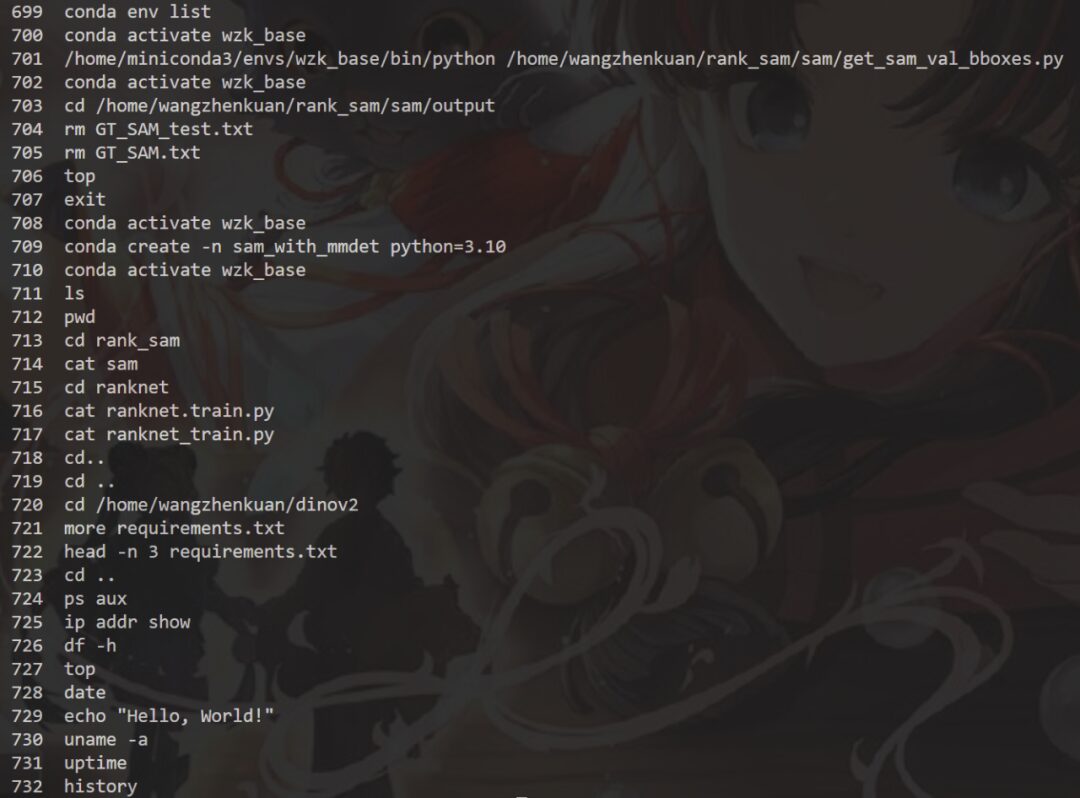
Essential 60 Practical Linux Commands Revealed (Part 1)
31. awk:A text processing tool for text manipulation and data extraction
awk '{print $1}' file_name # Extract the first column of data from the file
32. ssh-keygen:Generate SSH key pairs for authenticating remote servers
ssh-keygen -t rsa
33. date:Display or set the system date and time
date

34. echo:Output text to standard output
echo "Hello, World!"

35. ln:Create hard links or symbolic links
ln source_file link_name # Create a hard link
ln -s source_file link_name # Create a symbolic link
36. uname:Display system information
uname -a

37. shutdown/reboot:Shut down or restart the system
shutdown -h now # Shut down the system immediately
reboot # Restart the system
38. who/w:Display information about currently logged-in users
who
39. curl:Interact with network resources, supporting various protocols
curl -X GET http://example.com
40. zip/unzip:Compress and decompress ZIP files
zip archive.zip file1 file2 # Compress files
unzip archive.zip # Decompress ZIP files
41. chmod/chown:Change file or directory permissions and ownership
chmod permissions file_name # Change file permissions
chown owner:group file_name # Change file owner
42. useradd/userdel:Add and delete user accounts
useradd new_user # Add user
userdel username # Delete user
43. passwd:Change user password
passwd username
44. cron:Task scheduler for automatically executing scheduled tasks
crontab -e # Edit user’s scheduled tasks
45. uptime:Display system uptime and load
uptime

46. hostname:Display or set the computer’s hostname
hostname # Display hostname
47. iptables/ufw:Configure firewall rules
iptables -A INPUT -p tcp --dport 80 -j ACCEPT # Allow HTTP traffic
ufw enable # Enable Uncomplicated Firewall
48. netstat/ss:Display network connection information
netstat -tuln # Display all TCP and UDP ports
ss -tuln # View network connections using Socket Stat
49. ps/top/htop:Display process information and system resource usage
ps aux # Display all processes
top # Monitor system resources in real time
htop # More user-friendly process monitor
50. history:View command history
history

51. free:Display system memory usage
free -m # Display memory usage in MB
52. lsblk/fdisk:View disk partition information and manage disks
lsblk # Display block device information
fdisk /dev/sdX # Open disk partition tool
53. nc:Network connection testing and data transfer
nc -vz host_name_or_ip port # Test if the host's port is reachable
54. stat:Display detailed information about a file or directory
stat file_or_directory
55. nmcli:Command-line tool for managing network connections
nmcli connection show # Display network connection information
56. tailf:Real-time tracking of the end of a file, similar to tail -f
tailf file_name
57. scp:Securely copy files from local to remote host or from remote host to local
scp local_file remote_user@remote_host:/remote/directory # From local to remote
scp remote_user@remote_host:/remote/file local_directory # From remote to local
58. rsync:Used to synchronize files and directories between local and remote systems
rsync -avz source_directory/ remote_user@remote_host:/remote/directory/
59. dd:Used for copying and converting files
dd if=input_file of=output_file bs=block_size
60. sudo:Run commands with superuser privileges
sudo command_to_run_as_superuser
The sudo command allows ordinary users to execute commands that require superuser privileges, provided they have the appropriate permissions in the sudoers file. This is a key tool for ensuring system security, and it should be used with caution.

For course inquiries, add: HCIE666CCIE
↑ Or scan the QR code above ↑
What technical points and content do you want to see?
You can leave a message below to let Xiaomeng know!